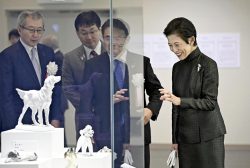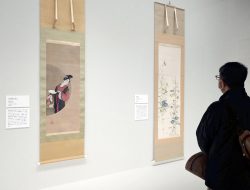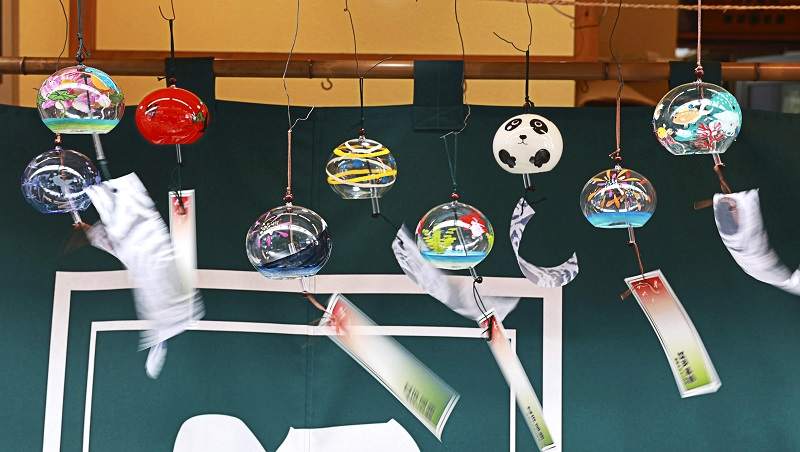
Glass wind chimes swing in the wind at Shinohara Maruyoshi Furin in Taito Ward, Tokyo.
11:46 JST, July 28, 2022
The Edo furin wind chimes tinkle as they sway in the wind, and their hand-painted designs project an elegant, summery feel.
They are made with a glass-blowing technique that has been handed down since the Edo period (1603-1867).
Michihiro Shinohara, a craftsman at Shinohara Maruyoshi Furin studio in Taito Ward, Tokyo, said these wind chimes have been popular since the late Edo period as a way to feel cool on hot summer days.
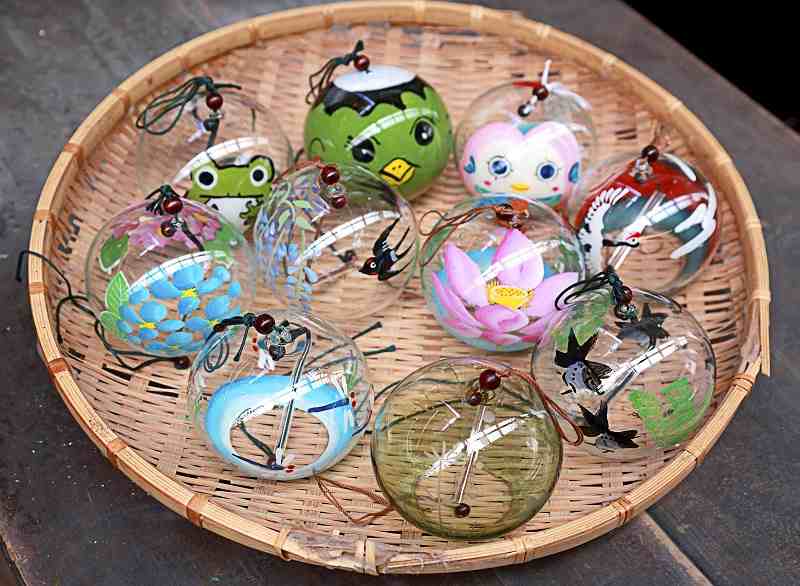
Wind chimes painted with designs such as flowers, dragonflies and the face of a kappa water goblin
Molten glass is placed on the end of a hollow rod and air is blown into it — a technique called chubuki — to form a round shape. The glass is as thin as 1-2 millimeters.
“Each one of them is handmade, so the size and shape are slightly different and the sounds are different, too,” Shinohara, 32, said.
Born into a family of craftsmen, Shinohara became fascinated by the depth of Edo furin culture. He followed the family’s path and became an apprentice to his father after graduating from university.
He uses a whetstone to knurl the edge of the chime’s opening, so that it makes a gentle sound when a thin glass rod inside swings and hits the edge.
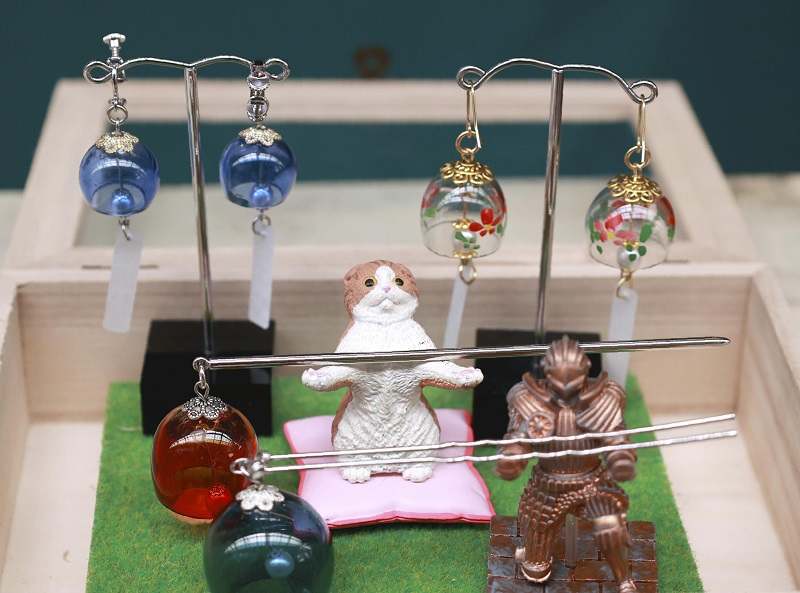
Small wind chimes can be worn as earrings and hairpins
Pictures and patterns are painted on the inside of the glass with oil-based pigments and other materials using a brush.
Many of the designs contain wishes or have some meaning: Goldfish for fortune, fireworks as an amulet, dragonflies for luck and Mt. Fuji for longevity.
Shinohara puts a new twist on the chimes to try to attract younger people. For example, he depicts a cute whale shark that looks like it is swimming in a light blue sea.
As housing styles have changed, chimes are not only hung under eaves but also used as interior design. Shinohara suggests ways to decorate with wind chimes indoors, such as hanging them on a wooden stand in the living room or on a bamboo board nailed to a wall or a pillar.
They can also be displayed in a showcase, and small versions can be worn as accessories like earrings and hairpins.
“It is relaxing and soothing to hear the gentle sounds of the chimes,” Shinohara said. “It’ll be nice if they make you feel cool, even if only a little.”
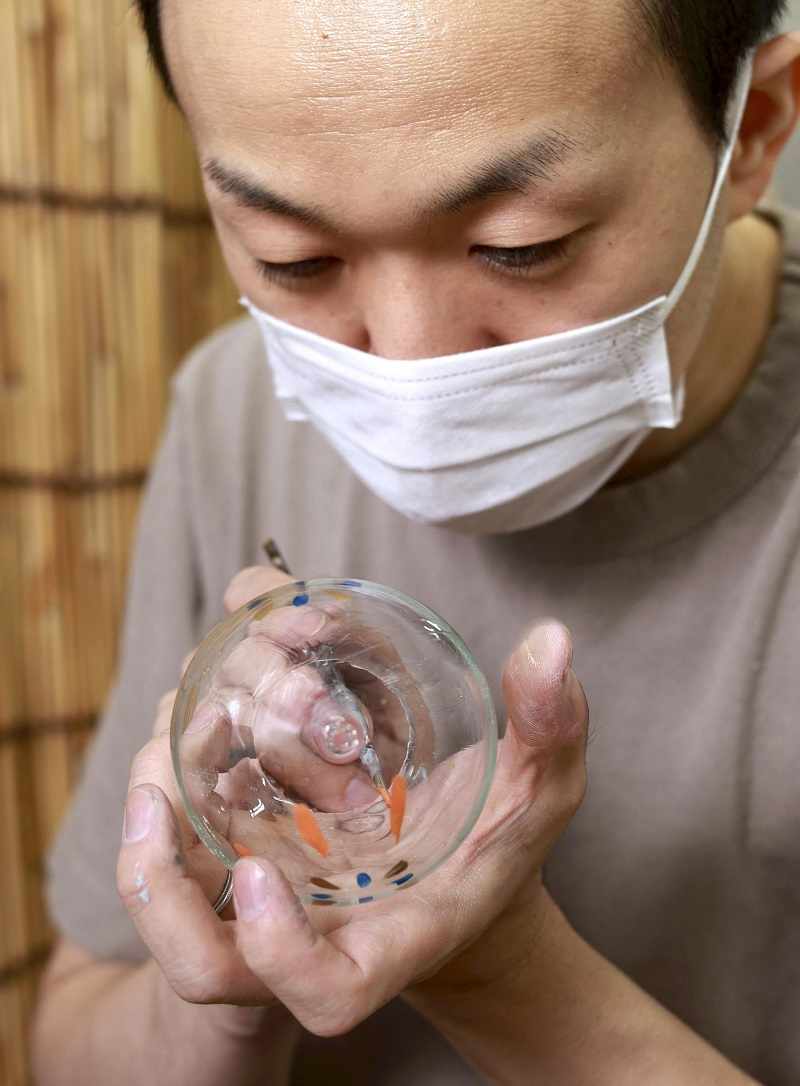
The inside of a wind chime is painted with a brush.
Paint your name
It is said that furin originated from a fortune-telling tool that was introduced from China along with Buddhism. They were hung on the roofs and pagodas of temples as amulets.
In the Edo period, there were many metal ones and glass ones did not become common until later. A luxury item at first, glass wind chimes gradually spread to the common people.
There were said to have been five or six glass wind chime studios in Tokyo after World War II, but today there are only two, including Shinohara’s studio. The term “Edo furin” was coined by Shinohara’s grandfather, who was a leading expert in the craft.
At Shinohara’s workshop, wind chimes with names painted on them are popular among foreigners. Workshops and wind chime kits are popular, too.
“I want families to visit the studio to try their hand at making them during summer vacations, and have more people enjoy furin,” he said.
Shinohara teaches painting and glassblowing in workshops. (Reservations are necessary.)
The studio sells kits for beginners as well as its own wind chimes, which are available at some variety stores and online at https://www.edo-fuurin.com/
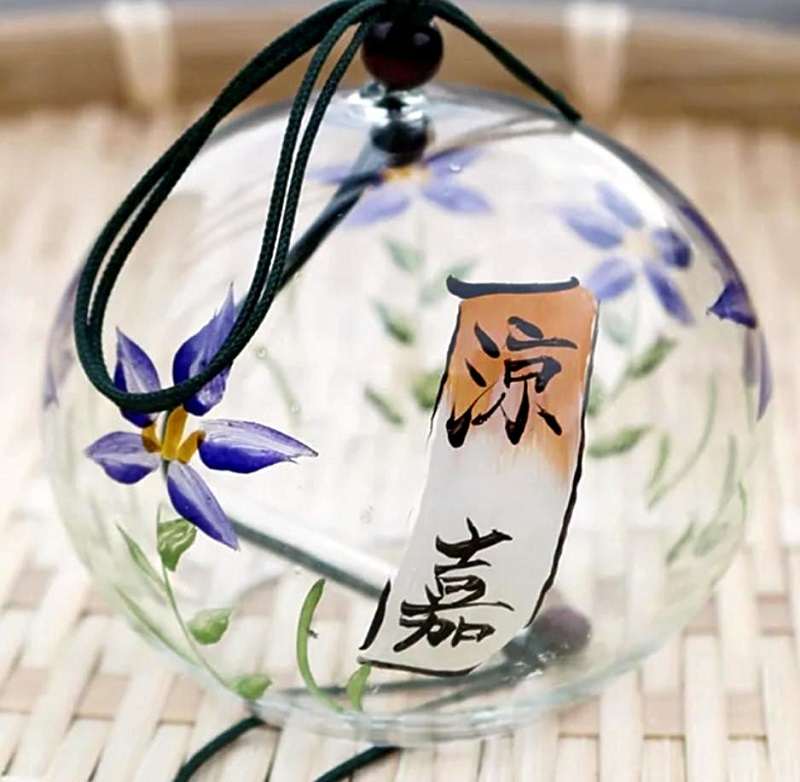
A wind chime decorated with a name
"Culture" POPULAR ARTICLE
-

Van Cleef & Arpels Dazzles with Art Deco Artisanry at Tokyo Exhibit
-

Disney’s ‘Twisted-Wonderland’ Animated Series Puts Villains in Spotlight: New Show Features School Inspired by Classic Disney Films
-

Ayumi Hamasaki’s Shanghai Concert Canceled Day Before Schedule as Part of Beijing Backlash
-

‘The World Masterpiece Theater Series’ Celebrates 50 Years; Animator Looks Back on Creating Anime Classics
-

Popularity of Piggy Banks Across Time and Place Seen at Bank’s Museum of Money Boxes in Hyogo Pref.
JN ACCESS RANKING
-

Tokyo Economic Security Forum to Hold Inaugural Meeting Amid Tense Global Environment
-

Keidanren Chairman Yoshinobu Tsutsui Visits Kashiwazaki-Kariwa Nuclear Power Plant; Inspects New Emergency Safety System
-

Imports of Rare Earths from China Facing Delays, May Be Caused by Deterioration of Japan-China Relations
-

University of Tokyo Professor Discusses Japanese Economic Security in Interview Ahead of Forum
-

Japan Pulls out of Vietnam Nuclear Project, Complicating Hanoi’s Power Plans



